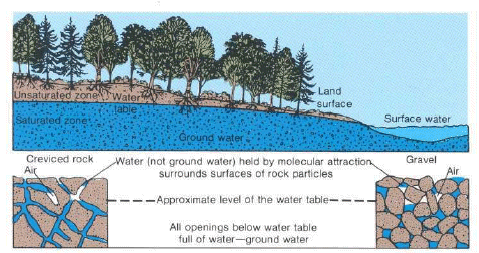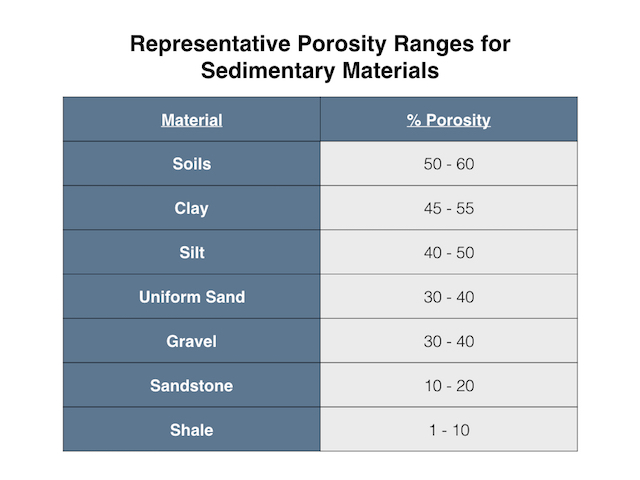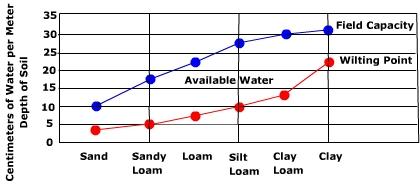Subsurface water
Groundwater and soil water together comprise approximately .5% of all water in the hydrosphere. Water beneath the surface can essentially be divided into two zones (Figure 10.5), the unsaturated zone (also known as the "zone of aeration") which includes soil water zone, and zone of saturation which includes ground water. Air and water occupies the pore spaces between earth materials in the zone of aeration. Sometimes, especially during times of high rainfall, these pore spaces are filled with water. The water table divides the zone of aeration from the zone of saturation. The height of the water table will fluctuate with precipitation, increasing in elevation during wet periods and decreasing during dry. Note how the water table intersects the level of the stream surface in Figure 10.5. Seepage of groundwater into a stream provides a base flow of water for perennial streams.

Figure 10.5 Zones
of water beneath the surface
Courtesy USGS (Source)
Soil Water
Soil water is held in the pore spaces between particles of soil. Soil water is the water that is immediately available to plants. Soil water can be further sub-divided into three categories, 1) hygroscopic water, 2) capillary water, and 3) gravitational water. Hygroscopic water is found as a microscopic film of water surrounding soil particles. This water is tightly bound to a soil particle by molecular attraction so powerful that it cannot be removed by natural forces. Hygroscopic water is bound to soil particles by adhesive forces that exceed 31 bars and may be as great as 10,000 bars (Recall that sea level pressure is equal to 1013.2 millibars which is just about 1 bar!). Capillary water is held by cohesive forces between the films of hygroscopic water. The binding pressure for capillary water is much less than hygroscopic water. This water can be removed by air drying or by plant absorption, but cannot be removed by gravity. Plants extract this water through their roots until the soil capillary force (force holding water to the particle) is equal to the extractive force of the plant root. At this point the plant cannot pull water from the plant-rooting zone and it wilts (called the wilting point). Gravity water is water moved through the soil by the force of gravity. The amount of water held in the soil after excess water has drained is called the field capacity of the soil. The amount of water in the soil is controlled by the soil texture. Soils dominated by clay-sized particles have more total pore space in a unit volume than soils dominated by sand. As a result, fine grained soils have higher field capacities than coarse-grained soils.
Table 10.1 Representative Porosity Ranges for Sedimentary Materials
The diagram below shows the relationship between soil texture, wilting point, field capacity, and available water. The difference between the wilting point and the field capacity is the available water.

Figure 10.6 Relationship Between Available Water
and Soil Texture
Note that the smallest amount of available water is associated with the coarsest soil texture, sand. The amount of available water increases toward the center of the graph where soils with a mixture of different sized particles (loamy soils) are found. The available water then drops off toward the fine textured soils on the right. How does one explain the relationship between available water and soil texture? Coarse soil does not have much available water because it doesn't hold much water to begin with. At the other end of the spectrum, low available water in fine soils is due to strong bond between soil particles and water. Plants have a harder time pulling water away from the soil particle under these conditions.